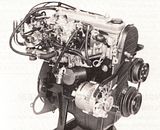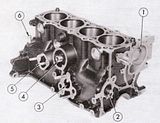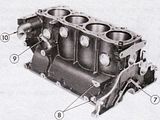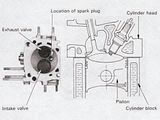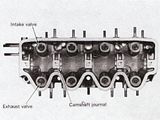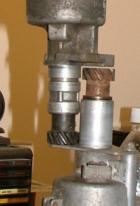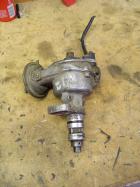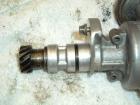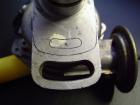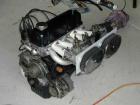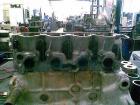The Nissan E engine (PLASMA) was a major redesign of the Nissan A engine, specifically to fit Front-Wheel Drive vehicles. The first varition, E15 debuted in late 1981 for the 1982 Pulsar (N10 "Datsun 310"), replacing the A15. it has an identical bore & stroke. For 1983 the E-series replaced the A-series engines in the Sunny model series. It can be swapped into Datsun 1200 with the usual swap fabrication.
Contents |
Overview
The A-engine, which debuted in 1966, has wide popularity for its good response to acceleration. The E-engine is an extensively improved version of the A-engine. To meet both the trend toward enhancement of product value and the requiements of many customers, the E-engine was adopted for exclusive use on front-wheel drive, front-engine models. The E-series engine has been designed with consideration being given to small size, high output and fuel economy. Its design and construction have made it possible to mount the engine laterally on the FF (Front-engine, Front-drive) models, in conjunction with the "newly developed" transaxle which is in-line mounted on the engine.
The E-engine provides higher power and greater torque than the A-engine. Its dynamic performance, as in standing start, passing acceleration, upgrade driving, etc. has been increased by 5 to 10%. A summary of the major improvements is as follows:
- The E-engine is approximately 10kg (22 lb) lighter than the A-engine
- An O.H.C., cross-flow engine design provides high torque as well as responsiveness to acceleration.
- The cylinder pitch is identical to that of the A-engine, which has already been proven to be both duarable and reliable
- The overall length has been shortened by 48mm (1.89 in) to accomodate the in-line transaxle design.
A15: 65 HP @ 5,200 RPM, 112 ft-lb @ 2,800 RPM E15: 67 HP @ 5,200 RPM, 116 ft-lb @ 3,200 RPM
A summary of the major features of the E-series engine is given below:
- This engine is a water-cooled, 4 cylinder, in-line type.
- High combustion efficiency and low frictional loss result in higher engine output.
- A cross-flow design has been adopted for the intake and exhaust system to provide highly efficient combustion. The intake port employs a design that increases the "swirl" effect.
- The combustion chamber features a semi-spherical shape which provides high combustion efficiency. Additionally, the spark plug is situated nea the center of the combustion chamber for added combustion efficiency.
- The valve mechanism employs an OHC design with valves placed in a "V" arrangement. The camshaft is driven by a timing belt which features quiet operation and high durability.
Sources
JAPAN MARKET E-Series vehicles B11: 8110-8701 Sunny E15 M10: 8208-8701 Prairie E15S N12: 8205-8701 Pulsar E15S+E15E N12: 8305-8701 Pulsar E15T VB11: 8210-8701 AD Van E15S
USA MARKET B11: 0282-0882 Sentra E15S B11: 0882-0187 Sentra E15S+E16S N10: 1081- 310 E15S N12: 0882- Pulsar E16S N12: 0283-0784 Pulsar E15ET EUROPE MARKET B11 EUR 0382- E15S B11 EUR 0385-0187 E16S M10 EUR 0982-0187 E15S N10 EUR 1081- E15S N12 EUR 0482- E15S N12 EUR 0682- E15ET N12 EUR 0685- E16S
Block
The cylinder block employs the same half-skirt design as that used in the A-series engine to provide small size and reduce weight. It uses a new casting process and is shorter, the better to fit transversely in small engine bays.
A jackshaft is fitted to the traditional camshaft location in the block, for the sole purpose of driving the the fuel pump and oil pump.

![[Datsun 1200 encyclopedia]](/wiki/upload/wiki.png)
